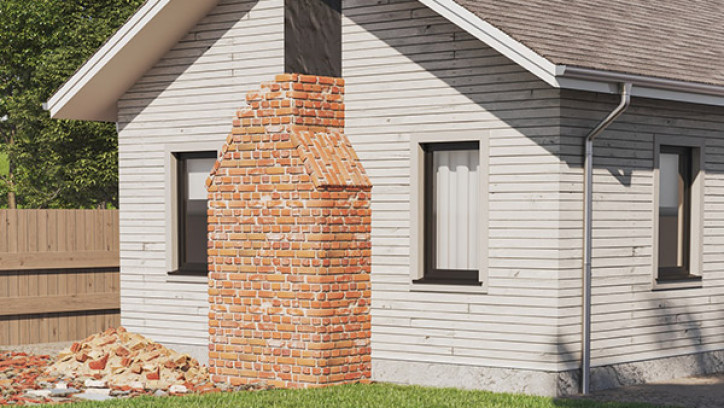1.4 Removal of building element

Removing an element from a building up to 3 storeys high doesn't require a building consent if the structure, specified systems and fire separations remain unaffected.
This exemption applies to the removal of a building element such as a chimney or roof (including cladding) rather than to the complete demolition of a building.
It is limited to any building that is not more than 3 storeys high as long as the removal does not affect the primary structure, any specified system or any fire separation (which includes firewalls protecting other property).
Note that any repair work associated with removing a building element can be done under section 1.1 (repairs, maintenance, and replacement). For example, removing an external chimney will require the making good of the gaps left in the wall and roof claddings.
All new building work must comply with the Building Code, including its structural performance requirements. On completion of the building work, the altered building must comply with the Building Code to at least the same extent as it did before the building work was undertaken.
If you are considering building work that is close to or involves potentially load-bearing walls, it is important to get professional advice.
What is exempt
- Removing all non-load-bearing masonry walls (internal and external) in a 3 storey commercial building, except those that are fire separations.
- A home owner proposes to reduce the likelihood of earthquake damage to their house by completely removing a brick chimney located on an external wall. A designer inspects this and advises the owner that the chimney building element is independent of the house’s primary structure.
- A building owner wishes to demolish the upper portion of a chimney (ie above the roof) of a redundant fireplace so as to reduce possible property damage in the event of an earthquake.
What needs consent
- A home owner wishes to completely demolish an internal masonry chimney between the dining and living rooms. A builder inspects the roof space and finds that the chimney is load-bearing as it supports some of the roof rafters and ceiling joists. As removing the chimney will affect the primary structure of the house, the proposed building work will require a building consent.
- An owner of a 3 storey office and retail building wants to reduce the risk of injuring office occupants on the middle floor in any future earthquake. They propose to entirely remove the suspended ceiling grid which supports the heavy fibrous plaster tiles and expose the underside of the upper floor slab. Since the building has a heat detection emergency warning system, the proposed removal of the building element (ie the suspended ceiling) will affect this specified system. Therefore, a building consent will be required to do this work.
What the law says
31. Removal of building element
The removal of a building element from a building that is not more than 3 storeys, provided that the removal does not affect:
(a). the primary structure of the building; or
(b). any specified system; or
(c). any fire separation.